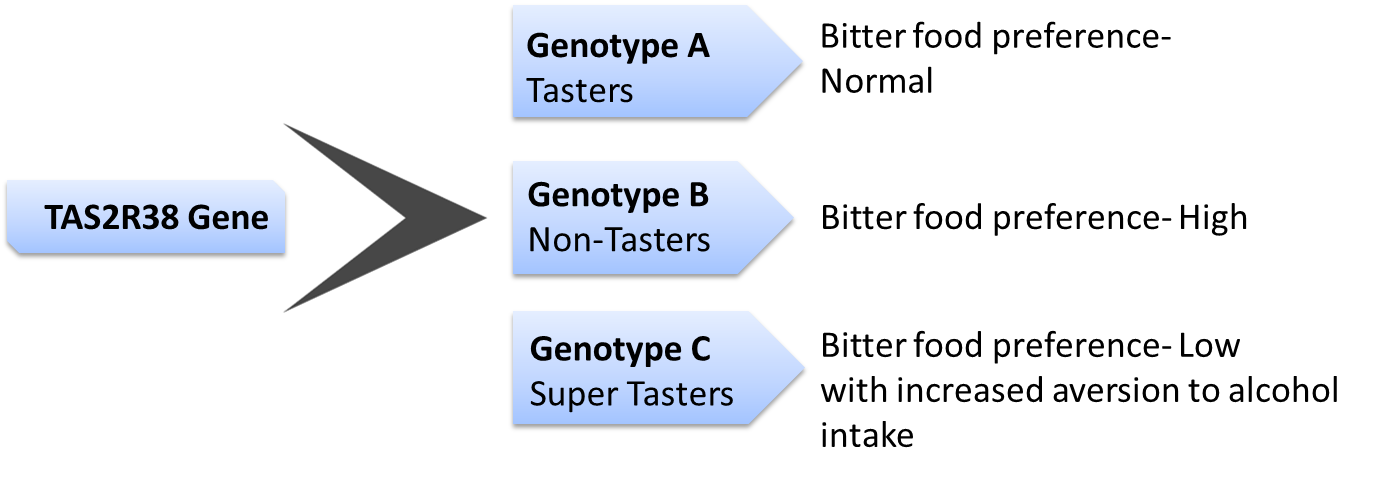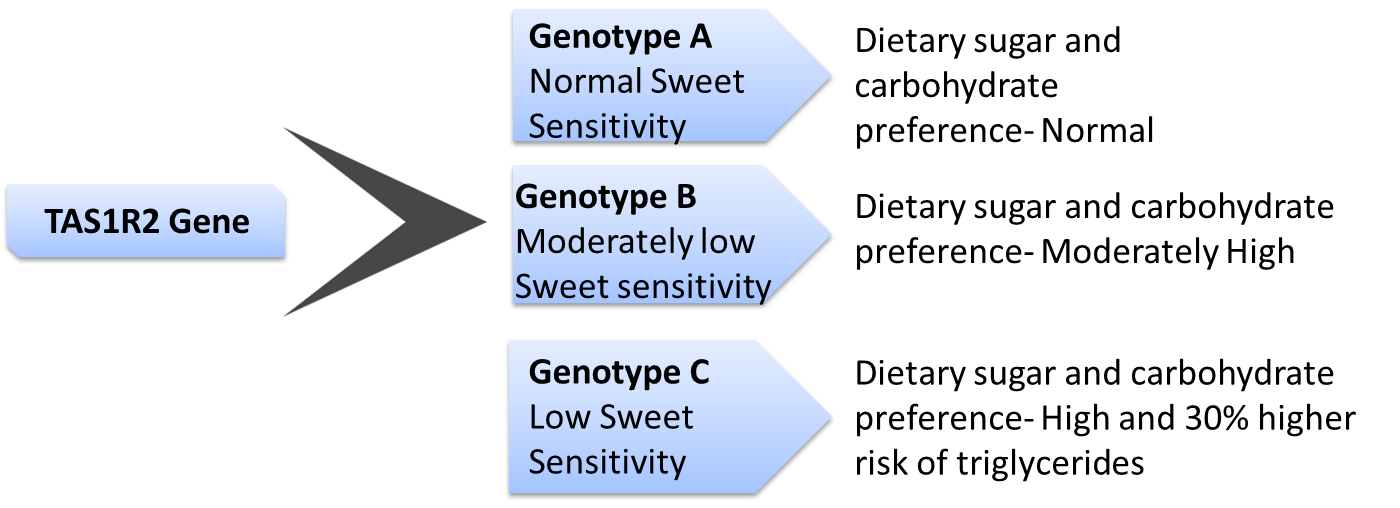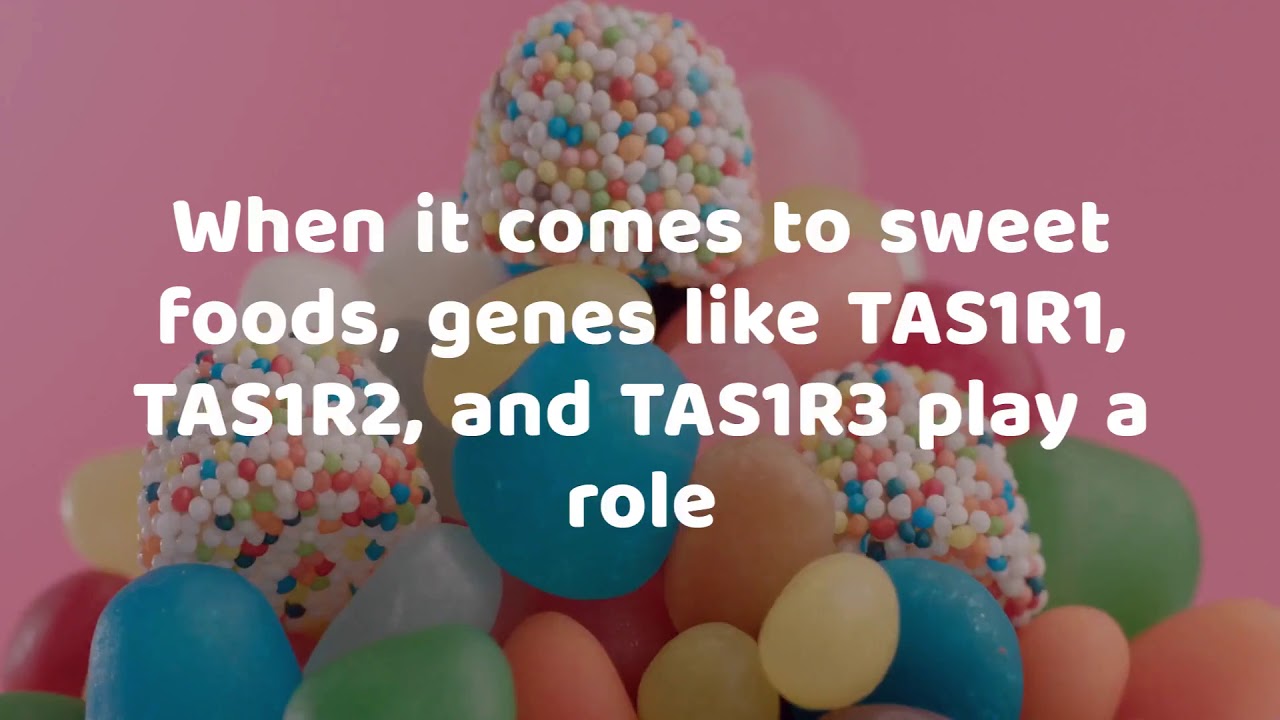When opting for a healthy lifestyle, much of the difficulty we face is attributed to our diet. Why aren't we craving healthy foods? Why do some of us feel a surge of revulsion every time we see kale before us? It appears our food preferences run deeper, well into our genetic code.
The sense of taste
Taste preference is a complex interplay of physiological, psychological, genetic and social factors of an individual. Among these, genes particularly play a significant role in influencing an individual’s taste and food preferences. By understanding the genes that play a role, it will help us align our diet based on our genes, and perhaps, this will help us eat healthier!
Of the 5 different senses we have, taste is the most personal of it all. It's uniquely ours, and is the determinant of what we choose to eat. Just as there are differences among humans in various physical traits due to genetics, there are myriad differences in taste preferences, sometimes major and often minor. Efforts have been underway since the early days to determine the origin of our taste preferences, and we now know they're genetically encoded.
Genetics of taste preferences
Taste preferences are known to influence energy intake and there are many genes that are important in determining taste preferences, with the gene TAS2R38 being a significant one.
1. The 'bitter' gene
The TAS2R38 gene, short for Taste 2 Receptor Member 38, is located on chromosome 7 and is known as the 'bitter' gene. This gene encodes a receptor that may play a role in the perception of bitter taste. They also play a role in sensing the chemical composition of the gastrointestinal tract. Research shows that TAS2R38 gene influences 70% of the preference for bitter foods.
Studies on TAS2R38 began when some people found phenylthiocarbamide (PTC), a synthetic compound, bitter while other others had no taste for PTC. Since then, although many different forms of this gene have been identified, there are predominantly two forms - taster and non-taster. The taste was initially thought of to be an effect of natural selection, as identifying bitter taste would help in staving off toxic substances in the food. However, the non-taster variant is also quite popular in the general population and the notion of natural selection of taster variant was dropped. Recent studies reveal that demographic pressures largely influence this gene's expression
The effect of TAS2R38 gene on BMI
There are certain variants of TAS2R38 gene with an association to greater BMI. The three variants of the gene can result into classification of non-tasters, tasters and super -tasters. The non- tasters have high threshold and low sensitivity while tasters have low threshold and high sensitivity. The third category is the super tasters who have an increased sensitivity. The taste perception of these three variants differs considerably, for example non-tasters perceive scotch as less bitter and more sweet than super tasters.

People with the non-taster version of the gene should modulate their energy intake to prevent excess intake of alcohol, or other high calorie bitter foods which can potentially increase their risk of obesity and other associated conditions.
2. The 'sweet' genes
Several genes influence our preference for sweet tastes. These include TAS1R1, TAS1R2. TAS1R3. The genes work interdependently. For example, the protein produced by TAS1R3 binds to the protein TAS1R1 to form a pleasant savoury taste, umami response or it could bind with TAS1R2 to form a sweet taste response.
Variants of 'sweet' genes
The variants of TAS1R1 play an important role in food preferences. Apart from food preference, TAS1R2 is present in various parts of the body and could play a role in sugar metabolism, contributing to inter-individual difference in energy intake.

Individuals with the ‘high risk’ genotype can modulate the effect of the risk variant by controlling the amount of carbohydrate consumed.
3. The 'fat' genes
An important food preference that can directly affect the risk for obesity is fat taste preference. Fat from dietary sources is not only essential for energy storage but is also vital for temperature regulation. An important gene that regulates our perception of taste of fatty food is the CD36. Located on chromosome 7, this gene influences the amount of fat consumed.
Variants of 'fat' genes
Having certain variants of CD36 gene can increase or decrease the levels of CD36 protein produced. For example, some variants produce low levels of CD36 are, therefore, less sensitive to fat with higher threshold for increased fat intake. On the other hand, individuals with high levels are more sensitive to fat in their diet, and hence consume less fat.

Individuals with a high preference for food rich in fat should modulate their risk for obesity by controlling fat content in their diet. Studies have also shown that such individuals could lower risk for cardiovascular disease and obesity by following a mediterranean diet.
Taste preferences and metabolic disorders
The genetic variants that control our taste preference also have an association with obesity and other metabolic conditions. Metabolic syndrome is a combination of health issues that can increase our risk for certain serious health conditions like a cardiovascular disease or diabetes. Therefore, it has become all the more important to know the gene variants responsible for our food preference.
Taste is an individual preference, influenced by the genes that we carry, and dictating energy intake. An average human has over 9,000 taste buds and it is therefore no surprise that we love to eat! However, understanding the genes we carry will aid in making intelligent food choices for better health.
Have your DNA raw data from 23andMe, FTDNA, or MyHeritage?
Want to know your genetics of taste preferences? Find out by uploading your DNA raw data to Xcode Life!






